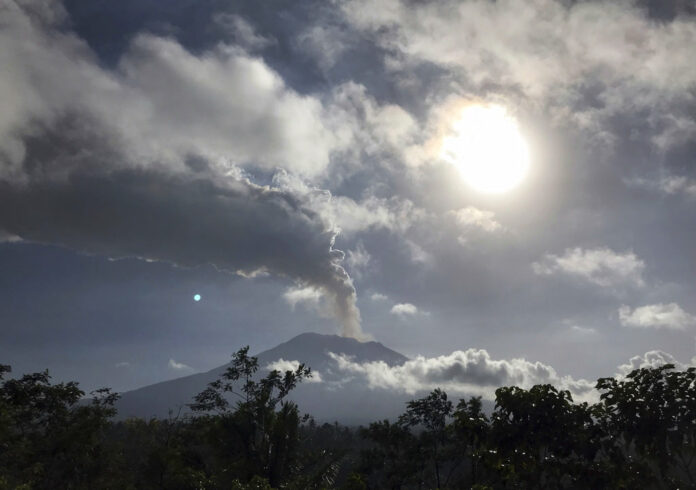
Update: The airport reopened Friday afternoon after a nearly 12-hour closure
DENPASAR, Indonesia — The Indonesian tourist island of Bali closed its international airport Friday, stranding thousands of travelers, as the Mount Agung volcano gushed a 2,500-meter (8,200-feet) column of ash and smoke.
Update: Bali Airport Reopens After Ash Threat Stranded Thousands
The National Disaster Mitigation Agency said nearly 450 flights were canceled, affecting some 75,000 people.
The regional Volcanic Ash Advisory Center in Darwin, Australia, said winds would carry the ash southwest toward Java, Indonesia’s most densely populated island. Volcanic ash is a potentially deadly threat to aircraft that can cause engines to “flame out.”
The volcano began belching ash and smoke on Thursday and several airlines canceled inbound and outbound flights scheduled for the evening.
“We hadn’t a place to stay for the night so we had to find something else, just took a taxi and stayed at a random hostel,” said a stranded German backpacker who identified herself as Louisa. “We hoped that we could leave this morning, but the airport is closed,” she said.
Two small airports, at Banyuwangi and Jember in eastern Java, also closed because of the ash threat.
Agung’s alert level has not been raised and an exclusion zone around the crater remains at 4 kilometers (2.5 miles).
The disaster agency said the closure of Bali’s airport is in effect until 7 p.m. It said the situation will be reviewed at midday.
Australia’s national airline Qantas said in a statement that it’s “currently not safe” to operate Bali flights.
It said it was monitoring advice from the ash advisory center and its own pilots and meteorologists would decide when flights can resume.
The volcano, about 70 kilometers (45 miles) northeast of Bali’s tourist hotspot of Kuta, last had a major eruption in 1963, killing about 1,100 people.
It had a dramatic increase in activity last year, forcing the evacuation of tens of thousands of people, but had quietened by early this year. Authorities lowered its alert status from the highest level in February.
Indonesia, an archipelago of more than 250 million people, sits on the Pacific “Ring of Fire” and is prone to earthquakes and volcanic eruptions. Government seismologists monitor more than 120 active volcanoes.














































